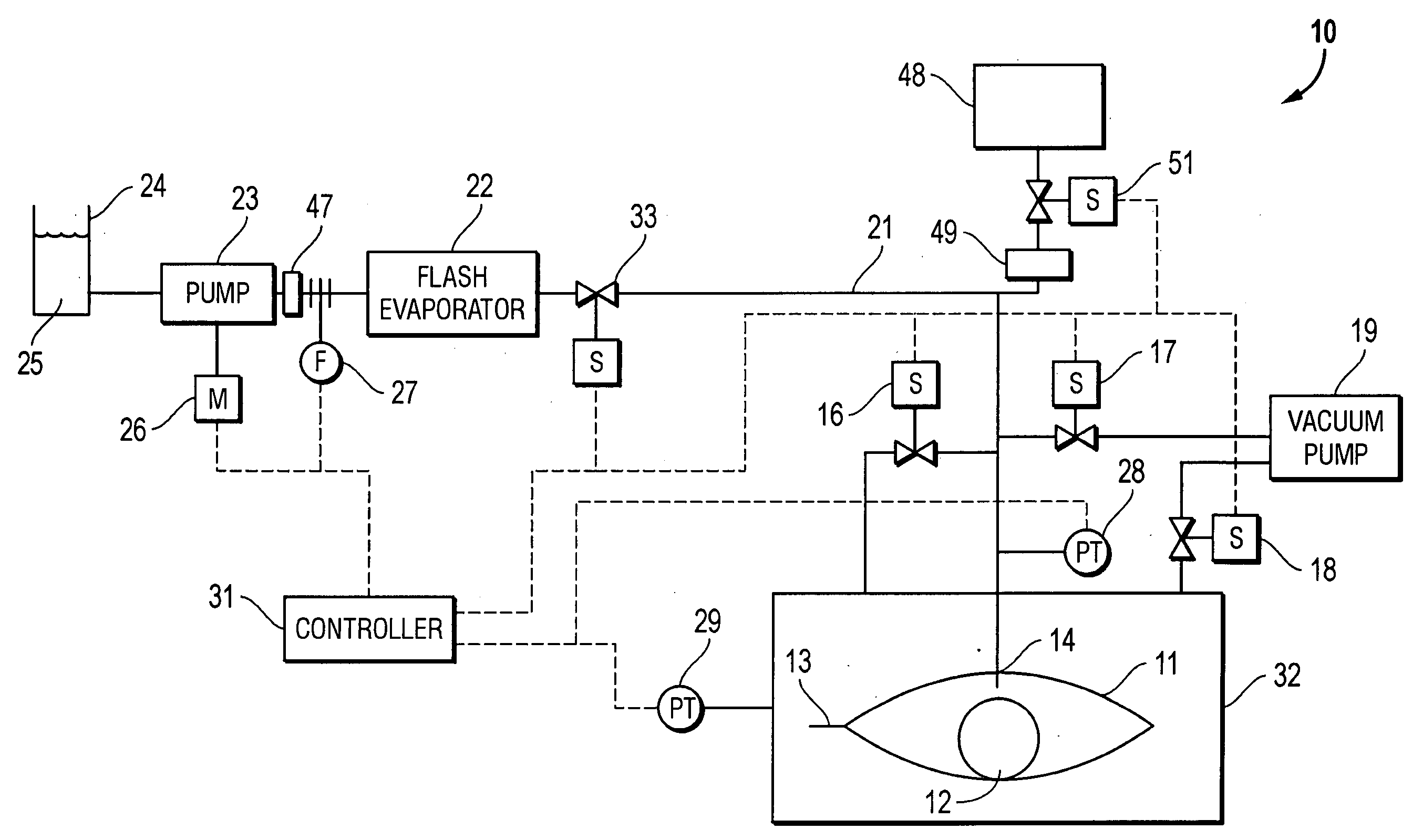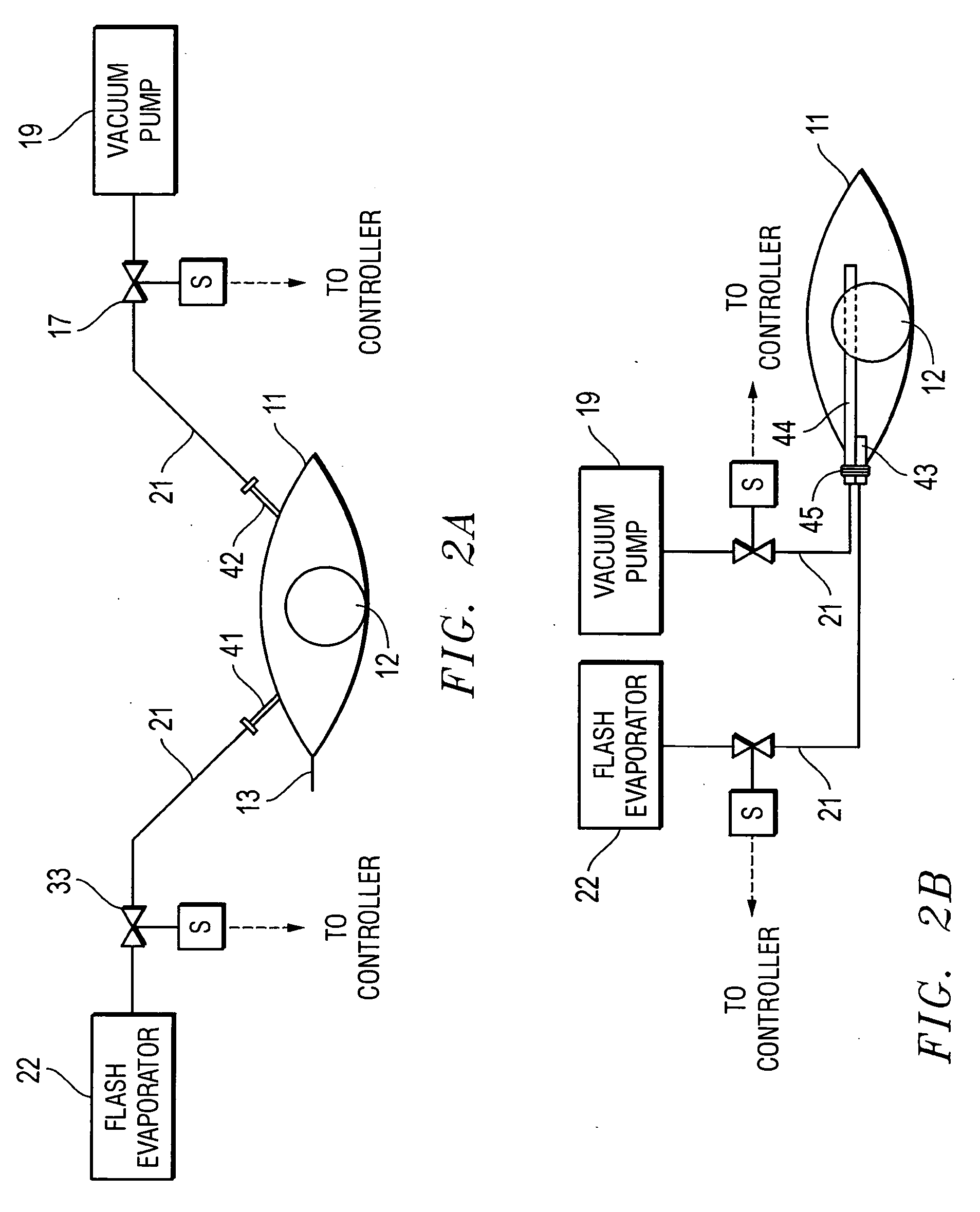Microbial destruction using a gas phase decontaminant
a technology of decontaminant and gas phase, applied in the field of sanitizing systems, can solve the problems of high temperature steam, foodtuffs and other fragile items that cannot be used on items that would be damaged, and achieve the effect of reducing pressure differential and minimizing the risk of explosion
- Summary
- Abstract
- Description
- Claims
- Application Information
AI Technical Summary
Benefits of technology
Problems solved by technology
Method used
Image
Examples
example 1
Disinfection Efficacy
[0059] The following experiments were performed using a system in accordance with the present invention. Food crops were pruned of inedible roots, leaves, etc., and weighed. A given food crop was then inoculated with a single challenge microorganism. All challenge microorganisms were purchased from ATCC as streptomycin-resistant strains-Esherichia coli (E. coli), Staphylococcus aureus (S. aureus), and Salmonella choleraesuis (S. choleraesuis). This was done so that when plating was performed on agar containing streptomycin, any natural flora that contaminated the food upon purchase would be eradicated by the antibiotic thereby allowing only the specific challenge microbe used the opportunity to grow on the plates. After inoculation, the crops were left to dry for 30 minutes to 1 hour. The crops were then placed in the Ziploc® bag and into the vacuum chamber. The bag was then connected to the metal hydrogen peroxide dispensing line via a tubing connector, the de...
PUM
| Property | Measurement | Unit |
|---|---|---|
| pressure | aaaaa | aaaaa |
| pressure | aaaaa | aaaaa |
| temperature | aaaaa | aaaaa |
Abstract
Description
Claims
Application Information
 Login to View More
Login to View More - R&D
- Intellectual Property
- Life Sciences
- Materials
- Tech Scout
- Unparalleled Data Quality
- Higher Quality Content
- 60% Fewer Hallucinations
Browse by: Latest US Patents, China's latest patents, Technical Efficacy Thesaurus, Application Domain, Technology Topic, Popular Technical Reports.
© 2025 PatSnap. All rights reserved.Legal|Privacy policy|Modern Slavery Act Transparency Statement|Sitemap|About US| Contact US: help@patsnap.com



